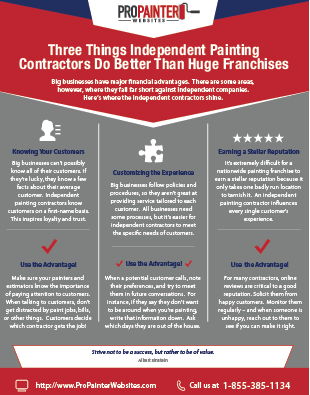Understanding Seasonal Influences On Commercial Outside Paint: Essential Expertise For Success
Understanding Seasonal Influences On Commercial Outside Paint: Essential Expertise For Success
Blog Article
Post By-Fox Rodriquez
When you're planning a commercial exterior paint task, seasonal variables can make or break your outcomes. You'll wish to consider just how temperature and humidity effect paint application and drying out times. Picking the best period can ensure your paint sticks effectively and lasts longer. Yet which seasons are absolutely the most effective for this type of job? Let's explore the key elements that can impact your task's success.
The Effect of Temperature on Paint Application
When you're preparing a commercial exterior painting task, the temperature level can considerably impact how well the paint sticks and dries.
Ideally, you want to repaint when temperatures vary between 50 ° F and 85 ° F. If it's also cold, the paint may not treat appropriately, causing problems like peeling or cracking.
On the flip side, if it's as well warm, the paint can dry too promptly, preventing proper bond and resulting in an uneven coating.
You should also consider the moment of day; early morning or late afternoon provides cooler temperature levels, which can be more beneficial.
Constantly check painters for the specific paint you're making use of, as they frequently provide guidance on the optimal temperature range for optimum outcomes.
Humidity and Its Result on Drying Times
Temperature level isn't the only ecological factor that affects your industrial external paint project; humidity plays a considerable duty as well. https://residential-painters-near99764.actoblog.com/35011250/raise-your-home-s-beauty-the-impact-of-residence-painters-on-your-living-room can slow down drying times significantly, impacting the general quality of your paint job.
When the air is saturated with wetness, the paint takes longer to treat, which can result in problems like inadequate attachment and a higher risk of mildew development. If you're painting on a specifically moist day, be planned for prolonged delay times in between layers.
It's critical to keep track of local climate condition and plan accordingly. Preferably, go for humidity degrees in between 40% and 70% for optimum drying.
Keeping these factors in mind guarantees your task remains on track and delivers an enduring surface.
Best Seasons for Commercial Outside Paint Projects
What's the very best season for your industrial external painting projects?
Spring and very early autumn are commonly your best options. Throughout these periods, temperature levels are light, and moisture degrees are commonly lower, developing ideal problems for paint application and drying out.
Prevent summer's intense heat, which can cause paint to dry as well quickly, resulting in bad adhesion and surface. In a similar way, winter's cool temperatures can prevent appropriate drying and curing, taking the chance of the durability of your paint job.
Aim for days with temperatures between 50 ° F and 85 ° F for ideal results. Keep in mind to check the local weather prediction for rainfall, as wet conditions can wreck your task.
Planning around https://www.bobvila.com/articles/how-to-hire-painting-and-drywall-repair-near-me/ guarantees your paint job runs smoothly and lasts longer.
Conclusion
To conclude, intending your commercial external paint projects around seasonal considerations can make a considerable distinction in the result. By organizing work throughout the optimal temperature levels and moisture degrees, you'll make certain better attachment and drying out times. Keep in mind to keep an eye on neighborhood weather report and choose the right time of year-- springtime and very early loss are your best options. Taking these actions will assist you achieve a resilient and expert finish that lasts.
